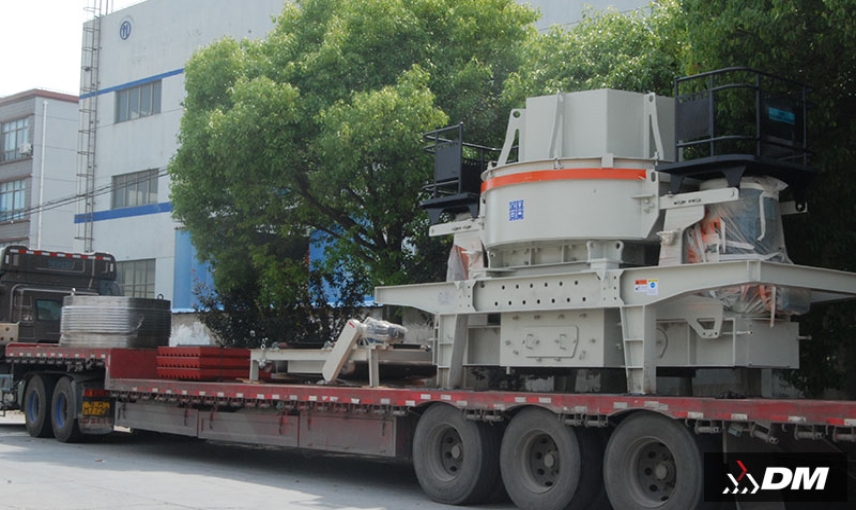
What Equipment is Used to Manufacture Artificial Sand?
With the increasing depletion of natural sand resources and the tightening of environmental protection policies, artificial sand (manufactured sand) has become a core aggregate substitute in the construction and infrastructure sectors due to its wide range of raw material sources (pebbles, granite, limestone, etc.), controllable particle shape, and stable quality. Manufacturing artificial sand does not rely on a single piece of equipment; instead, it requires a complete production line encompassing "crushing-screening-shaping-sand washing" processes. Each process requires specialized equipment, which must be flexibly combined based on raw material characteristics and finished product requirements. This article systematically sorts out the types of core equipment for artificial sand manufacturing, their functional positioning, and production line configuration logic, providing a reference for equipment selection in related projects.
I. Types and Functions of Core Equipment for Artificial Sand Manufacturing
The artificial sand manufacturing process is mainly divided into six links: "raw material pretreatment-primary crushing-secondary/tertiary crushing-shaping-screening-sand washing (optional)". Each link corresponds to specialized equipment, and the collaboration of these devices ensures that the finished sand meets the GB/T 14684-2022 "Sand for Construction" standard (fineness modulus 2.3-3.0, mud content ≤3%, needle-flake content ≤10%).
1. Raw Material Pretreatment Equipment: Vibrating Feeder and Jaw Crusher (Primary Crushing)
Raw materials (such as pebbles and ores) need to undergo pretreatment first to remove impurities and be crushed to a particle size suitable for subsequent equipment. The core equipment includes:
- Vibrating Feeder: Responsible for uniformly conveying raw materials to the primary crushing equipment to avoid blockage caused by raw material accumulation; some models are equipped with a screening function (e.g., bar screen), which can separate mud and fine powder from the raw materials in advance, reducing the subsequent crushing load. For example, when processing pebbles, a vibrating feeder can be used to screen out mud with a particle size <5mm, improving primary crushing efficiency.
- Jaw Crusher: As the core equipment for primary crushing, it crushes large raw materials (particle size 50-300mm) to 50-100mm, "reducing pressure" for the secondary/tertiary crushing link. Its advantages lie in high compressive strength (capable of processing hard rocks with ≤320MPa) and a large feed port (up to 1200×1500mm), making it suitable for high-strength raw materials such as granite and basalt. It is the "first threshold" equipment for artificial sand manufacturing from hard rocks.
2. Secondary/Tertiary Crushing Equipment: Cone Crusher and Impact Crusher (Sand-Making Host)
Raw materials after primary crushing need to be further crushed to a particle size close to sand (5-20mm). The equipment in this link directly affects the output and basic particle shape of artificial sand, and the mainstream equipment is divided into two categories:
- Cone Crusher: Suitable for secondary/tertiary crushing of hard rock raw materials (e.g., granite, quartzite). It adopts the "laminated crushing" principle, crushing materials through the extrusion of the moving cone and fixed cone. The finished product has a full particle shape and low needle-flake content (≤5%). Its advantages are large processing capacity (single-machine hourly output 100-500 tons) and long service life of wear parts (high-manganese steel liners can be used for 3000-5000 hours). It is often used in the secondary/tertiary crushing link of large-scale artificial sand production lines to "feed" the impact crusher.
- Impact Crusher (Sand Maker): The "core host" of artificial sand manufacturing, directly crushing and shaping raw materials of 50-100mm into sand particles of 0.15-5mm. Its working principle is to throw materials out through a high-speed rotating impeller and collide with the impact plate in the machine shell or with the materials themselves ("stone-on-stone" mode) to achieve crushing and particle shape optimization. According to the hardness of raw materials, the impact crusher has two crushing modes:
- "Stone-on-stone" mode: Materials collide with each other, suitable for hard rocks (e.g., granite), which can reduce wear of wear parts and make the finished particle shape more rounded;
- "Stone-on-iron" mode: Materials collide with the metal impact plate, with higher crushing efficiency (20%-30% higher than the "stone-on-stone" mode), suitable for medium and low-hardness raw materials (e.g., limestone, pebbles).
3. Shaping and Screening Equipment: Vertical Shaft Impact Shaper and Vibrating Screen
After secondary/tertiary crushing, the particle shape of some raw materials (such as pebbles





We will answer your email shortly!